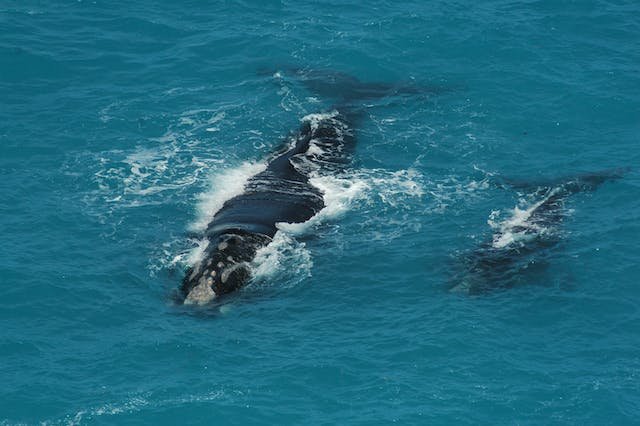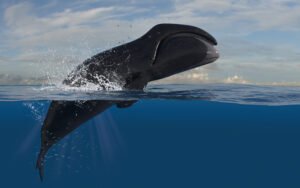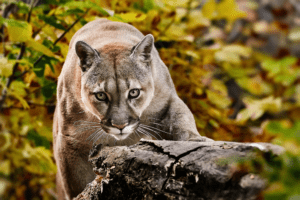Have you ever wondered that What Does A Bowhead Whale Look Like? Bowhead whales, also known as Greenland right whales, are large marine mammals belonging to the family Balaenidae. They are considered one of the most mysterious and elusive species of whale due to their remote habitat in the Arctic and sub-Arctic regions. These magnificent creatures have a unique appearance that sets them apart from other whale species.
Table of Contents
What About The Size Of Bowhead Whales?
Bowhead whales are known for their large and robust bodies, with adult males reaching lengths of up to 60 feet and weighing over 100 tons. Their body shape is similar to other baleen whales, with a stocky head and a long, streamlined body that tapers into a broad tail fluke.
One distinguishing feature of bowhead whales is the prominent “bow” shape of their lower jaw, which gives them their common name. This bow-shaped lower jaw allows them to break through thick layers of ice to breathe in the Arctic waters.
What is The Body Shape and Structure Of Bowhead Whales?

In addition to their unique lower jaw, bowhead whales have several other physical characteristics that make them stand out among other whale species.
One of the most notable features of a bowhead whale’s body is its large head, which can make up nearly 40% of its total body length. Their head is also very round and lacks a dorsal fin, unlike most other whale species.
Bowhead whales have two flippers on either side of their body, which they use for steering and maneuvering in the water. These flippers are broad and paddle-like, making them well adapted to navigating through icy waters.
What Does A Bowhead Whale Look Like? What is the Typical Color of Bowhead Whales?
Their skin is typically dark grey or black, with white patches on their chin and throat area. This darker coloring helps them blend in with their surroundings and provides camouflage against predators.
However, as they age, bowhead whales can develop patches of white on their bodies, particularly around the chin and throat area. These white patches are caused by scars from aggressive encounters with other whales or from rubbing against rough ice.
What Is The Distinctive Features Of Bowhead Whales?

Apart from their physical appearance, bowhead whales also have a few distinctive features that make them unique.
One of these features is their long lifespan. Bowhead whales are known to live for over 200 years, making them one of the longest-living mammals on Earth. This extended lifespan is due to their slow metabolism and low body temperature, which helps them conserve energy in the frigid Arctic waters.
Another notable feature of bowhead whales is their complex vocalizations. These whales produce a variety of sounds, including songs and social calls, which they use for communication and navigation in their habitat.
Presence of Scars and Barnacles on Bowhead Whale’s Body
Bowhead whales are known to have rough skin due to the presence of parasitic barnacles and whale lice. These organisms attach themselves to the whale’s skin and can often be seen on their heads, fins, and flukes.
Moreover, bowhead whales also have a high number of scars on their bodies from encounters with predators like killer whales or collisions with ice. These scars can provide valuable information to researchers about the whale’s age and social interactions.
Importance of Blubber for Insulation Bowhead Whales
Bowhead whales are well adapted to the extreme cold of the Arctic and sub-Arctic regions, thanks to their thick layer of blubber. This layer of fat beneath their skin acts as insulation, keeping them warm in frigid waters.
The blubber also serves as an energy reserve during long migrations or periods of fasting. It can make up to 40% of the whale’s body weight and is an essential adaptation for survival in their harsh environment.
Impact on the Bowhead Whale’s Appearance

The unique physical features of bowhead whales, such as their large head and wide jaw, have evolved to help them thrive in their specific habitat. These adaptations make them perfectly suited for life in the Arctic and sub-Arctic regions.
However, due to commercial whaling in the past, bowhead whales have experienced a significant decline in population. It has led to concerns about the impact on their genetic diversity and physical characteristics, as well as their overall health and survival.
What is The Shape and Size of the Tail Flukes of Bowhead Whales?
Bowhead whales have large, broad tail flukes that can measure up to 18 feet across. Their tail flukes are not only used for propulsion and swimming but also play a significant role in regulating their body temperature.
During the winter months, bowhead whales use their tail flukes to create holes in the ice by slapping them against the surface repeatedly. These openings allow them to surface and breathe, even in areas with thick ice cover.
How Do Bowhead Whales Survive in Extreme Arctic Conditions?
Bowhead whales have several adaptations that allow them to thrive in the harsh Arctic environment. Their thick blubber layer, which can be up to 1 foot thick, provides insulation against the cold waters. They also have a streamlined body shape and powerful flippers that enable them to swim efficiently through the icy waters.
In addition to physical adaptations, bowhead whales also have a unique ability to break through thick sea ice using their bow-shaped lower jaw and powerful head muscles. This allows them to create breathing holes in the ice, which they use to surface for air.
The Photographic Identification of Bowhead Whales

Scientists can identify individual bowhead whales by using photographs of their unique physical features. Just like human fingerprints, each whale has its distinct pattern of scars, barnacles, and white patches that make them easily identifiable.
By tracking these individual whales over time, researchers can learn more about their movements, behaviors, and social interactions. This information is crucial for conservation efforts and understanding the health of the bowhead whale population.
Furthermore, scientists can also use photographs to study the reproductive patterns and growth rates of bowhead whales. By analyzing changes in their physical features over time, they can estimate the age and health of individual whales.
This photographic identification method has been instrumental in monitoring the recovery of bowhead whale populations since commercial whaling was banned and continues to play a vital role in understanding and protecting these magnificent creatures.
Final Thoughts
Bowhead whales are truly remarkable creatures, adapted to survive in the extreme conditions of the Arctic. Their distinctive appearance, unique abilities, and rich cultural significance make them a fascinating species to study and admire. As we continue to learn more about these elusive creatures, we can better understand the delicate balance of life in our oceans and the importance of protecting these magnificent animals for generations to come.
Read Also: How Long Can Bowhead Whales Live?





